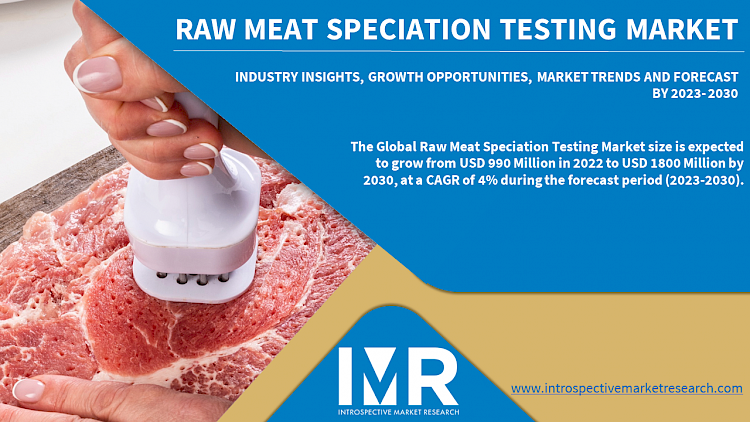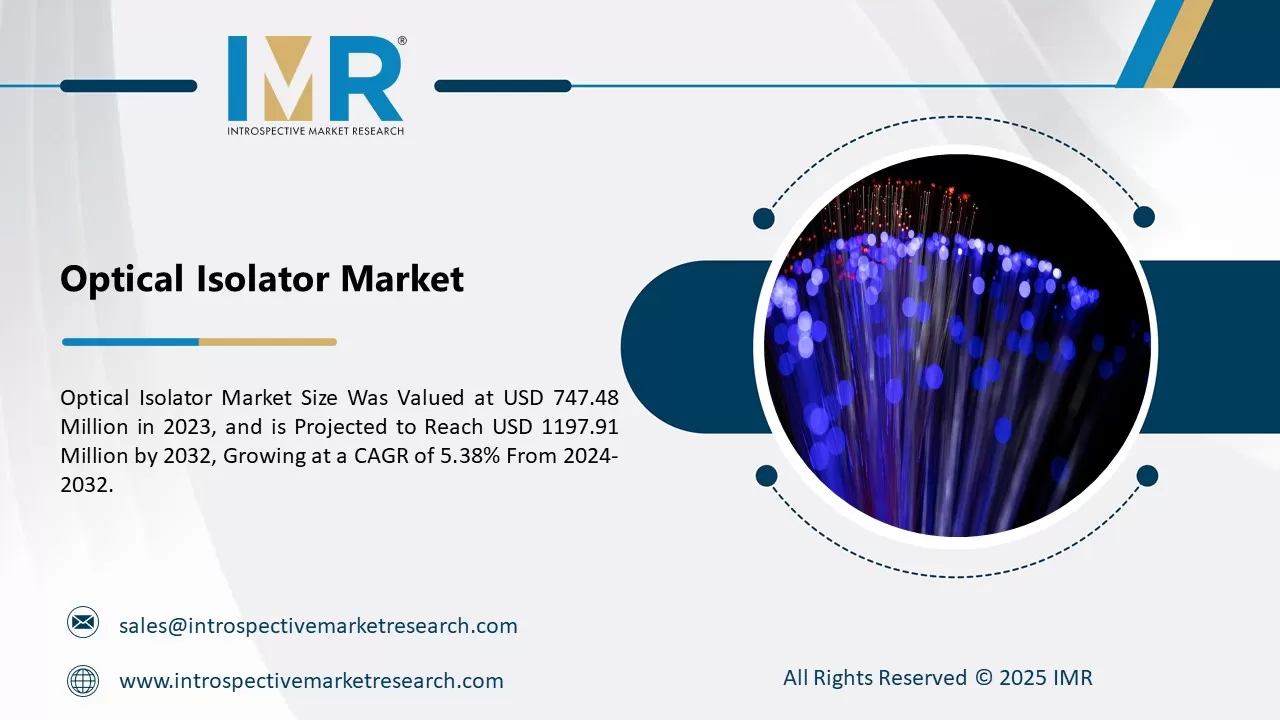
Market Overview:
The Global Raw Meat Speciation Testing Market size is expected to grow from USD 990 Million in 2022 to USD 1800 Million by 2030, at a CAGR of 4% during the forecast period (2023-2030).
Finding the species from which the meat originates is known as raw meat speciation. Visually distinguishing between the various species after the meat has been removed from the carcass is not always straightforward. The amount of processing determines how much the meat deviates from the original species. DNA tests are appropriate for a variety of matrices, including unprocessed, processed, and heat-treated goods. Additionally, there are techniques for analyzing highly-processed meats, where DNA might be seriously damaged. Screening can be done using immunological techniques like ELISA, however, caution must be exercised because cross-reaction with non-target organisms or other items is possible. Small quantities of meat might not be suitable for the detection limit.
Top Key Players Covered In The Raw Meat Speciation Testing Market:
- VWR International LLC (US)
- Eurofins Scientific SE (Luxemburg)
- ALS Limited (Australia)
- IEH Laboratories and Consulting Group (US)
- M?rieux NutriSciences (US)
- Bio-Check (US)
- Emport LLC (US)
- EMSL Analytical, Inc. (US)
- Neogen (US)
- Bureau Veritas (France)
- SGS (Switzerland), and Other Major Players.
Market Dynamics and Factors:
Growth in the meat business is fueled by rising global meat production and consumption. For instance, the USDA estimates that around 114.59 million tonnes of pork were produced worldwide in 2019. Because of the rising demand for packaged and processed beef, production is rising. Consumer awareness of counterfeit practices and concerns over the final items' health and safety are both increasing along with demand. Meat and meat products make up the majority of cases of food adulteration. As a result, the need for raw meat speciation testing is growing to prevent such incidents. Meat grade testing systems check product labels and guarantee the authenticity of meat products, assuring customer safety. As a result, to comply with regulatory standards, makers of meat products spend on research and development. These elements will fuel the Raw Meat Speciation Testing Market's expansion in the years to come.
The expansion of food trade across the borders of developing markets increases the growth potential of the global meat processing sector. Foods containing meat must be tested because of the rise in foodborne illnesses, inadequate hygiene standards, and unsanitary conditions during processing in some nations. The demand for testing services to uphold laws, impose import and supply bans on tainted food, and uphold food recalls is anticipated to increase in emerging economies.
Raw Meat Speciation Testing Market Report Highlight:
- By type, the PCR segment is anticipated to lead the growth of the Raw Meat Speciation Testing market in the forecasted timeframe. Using the polymerase chain reaction (PCR), a given DNA segment can be swiftly replicated (amplified) into millions or billions of copies, enabling a more thorough investigation. In PCR, primers?short synthetic DNA fragments?are used to choose the portion of the genome to be amplified. Then, that portion is amplified via several rounds of DNA synthesis.
- By Application, the chicken segment is expected to have the highest share of the Raw Meat Speciation Testing market over the projected period. Chicken is one of the most popular foods in the world. It is a high source of protein. Chicken is less expensive as compared to other meat. Henceforth, there are lots of people who eat chicken regularly. The increased meat chicken production around the world drives market growth.
- The North American region is expected to have the highest share of the Raw Meat Speciation Testing market over the projected period. The United States consumes the greatest amount of chicken. For instance, according to the world population review, in the United States, 15,000 metric tons of chicken consumes every day. The increasing disposable income of consumers, along with an increase in the number of working professionals boosts the market growth in this region.
Key Industry Development:
- In April 2023, International Laboratory Services (ILS) has taken a significant leap in fortifying the integrity of meat product testing by adopting a novel ISO 17025 accredited method for species identification. The implementation of this cutting-edge methodology reaffirms ILS's unwavering commitment to upholding the highest standards of accuracy and reliability in their analytical services.
- In January 2023, Eurofins Scientific, a global leader in bioanalytical testing, has announced a groundbreaking collaboration with the University of Vienna to pioneer a cutting-edge DNA sequencing method for enhanced species identification in meat products.
Raw Meat Speciation Testing Market Segmentation:
By Type
- PCR
- ELISA
- Other Molecular Diagnostic Tests (LC-MS/MS)
By Application
- Cow (Bos Taurus)
- Swine (Sus Scrofa)
- Chicken (Gallus Gallus)
- Horse (Equus Caballus)
- Sheep (Ovis Aries)
For this report, Introspective Market Research has segmented the Raw Meat Speciation Testing Market based on region:
Regional Outlook (Revenue in USD Million; Volume in Units, 2022-2028)
- North America
- The U.S.
- Canada
- Mexico
- Eastern Europe
- Russia
- Bulgaria
- The Czech Republic
- Hungary
- Poland
- Romania
- Rest of Eastern Europe
- Western Europe
- Germany
- UK
- France
- Netherlands
- Italy
- Spain
- Rest of Western Europe
- Asia Pacific
- China
- India
- Japan
- Singapore
- Australia
- New-Zealand
- Rest of APAC
- Middle East & Africa
- Turkey
- Saudi Arabia
- Qatar
- UAE
- Israel
- South Africa
- South America
- Brazil
- Argentina
- Rest of SA




